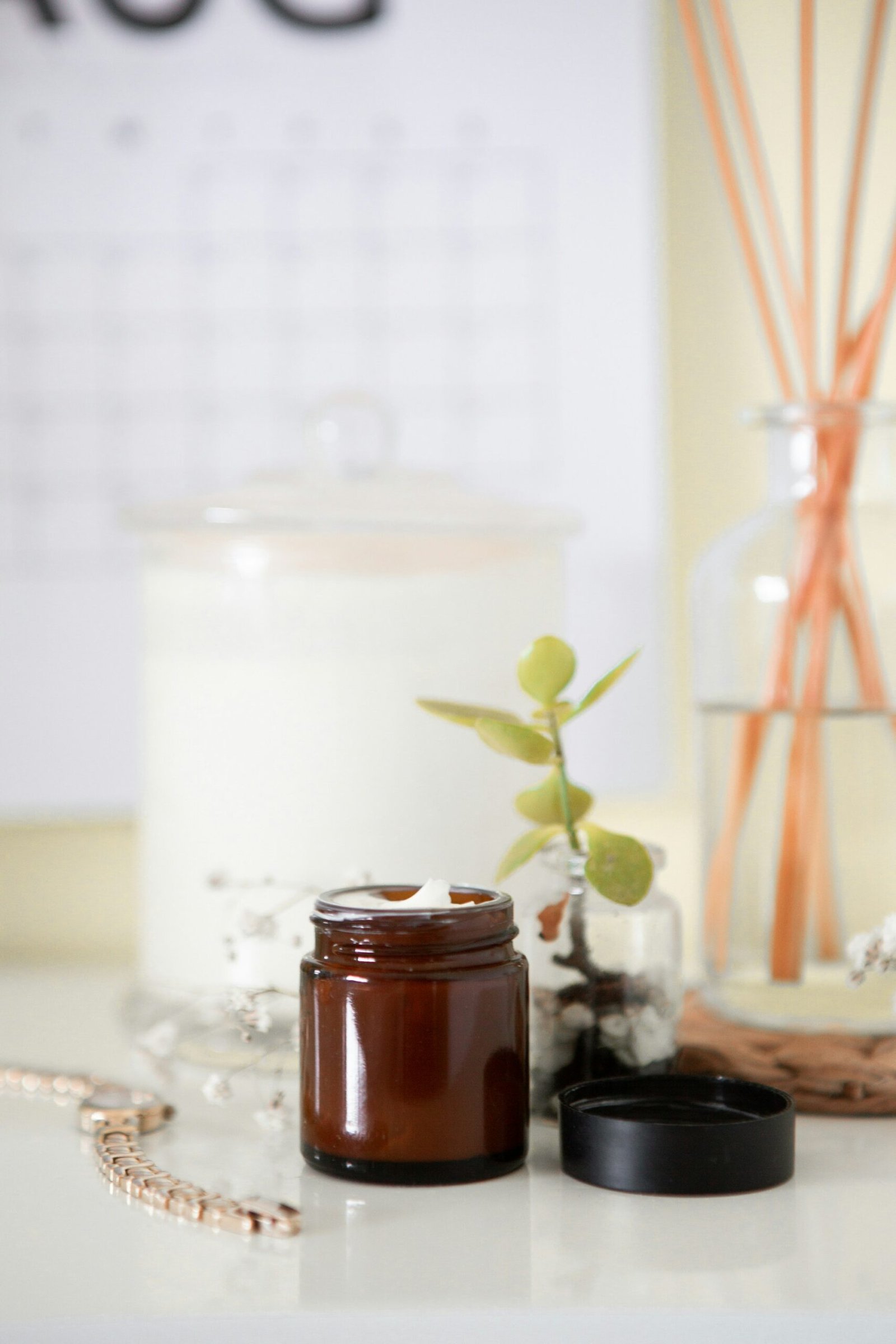Introduction to Easy-Care Houseplants
Houseplants have long been cherished for their ability to transform living spaces into lush, vibrant sanctuaries. Beyond their aesthetic appeal, houseplants offer a myriad of benefits, from improving air quality to enhancing mental well-being. Research has shown that indoor plants can reduce stress levels, boost mood, and even increase productivity. Their ability to act as natural air purifiers by filtering out toxins and releasing oxygen further underscores their value in our homes.
However, not everyone has the time or expertise to care for high-maintenance plants. This is where easy-care houseplants come into play. These resilient varieties require minimal attention, making them ideal for busy individuals or those new to plant care. Easy-care houseplants are designed to thrive with less frequent watering, lower light conditions, and minimal intervention, thus allowing even the most novice gardeners to enjoy the numerous benefits of indoor greenery.
In this blog post, we will explore the top 10 easy-care houseplants that are perfect for any home. Whether you’re looking to add a touch of nature to your living room, bedroom, or office, these plants promise to bring life to your space without demanding too much of your precious time. From the hardy Snake Plant to the low-maintenance ZZ Plant, our curated list will guide you through the best options for creating a green oasis in your home.
So, if you’ve ever felt daunted by the prospect of plant care or have a history of unintentionally neglecting your green companions, fret not. Our selection of easy-care houseplants is here to ensure that you can reap the rewards of indoor gardening with minimal effort. Let’s dive into the world of houseplants that are as forgiving as they are beautiful.
1. Snake Plant (Sansevieria)
The Snake Plant, scientifically known as Sansevieria and colloquially referred to as Mother-in-Law’s Tongue, is a resilient and attractive houseplant ideal for those seeking low-maintenance greenery. The snake plant is not only aesthetically pleasing but also incredibly hardy due to its upright, sword-like leaves. This plant can tolerate a wide range of environmental conditions, making it a perfect choice for beginners and seasoned plant enthusiasts alike.
One of the key features of the Snake Plant is its minimal water requirements. This succulent is adapted to survive in arid environments, meaning it can go weeks without needing water. Overwatering should be avoided, as it can lead to root rot. Instead, allowing the soil to dry out completely between waterings will ensure the plant remains healthy.
Another significant advantage of the Snake Plant is its ability to thrive in low-light conditions. While it appreciates bright, indirect light, it can also adapt to lower light levels, making it suitable for a variety of indoor spaces, from well-lit living rooms to dimly lit offices. This versatility in light tolerance further underscores its reputation as a low-maintenance houseplant.
In addition to its robust nature, the Snake Plant is renowned for its air-purifying qualities. According to studies conducted by NASA, the Snake Plant is effective at removing toxins such as formaldehyde, benzene, and xylene from the air, contributing to a healthier indoor environment. This makes it an excellent choice not only for its visual appeal but also for its functional benefits.
Propagation of the Snake Plant is straightforward, adding to its ease of care. It can be propagated through leaf cuttings or by dividing the rhizomes. This means that with a little effort, you can grow new plants from an existing one, expanding your indoor garden effortlessly.
In summary, the Snake Plant’s hardy nature, low water requirements, adaptability to various light conditions, air-purifying qualities, and ease of propagation make it a top choice for those looking to add low-maintenance greenery to their homes.
Spider Plant (Chlorophytum comosum)
The Spider Plant, scientifically known as Chlorophytum comosum, is a popular houseplant recognized for its aesthetic appeal and ease of care. This plant features long, arching leaves that create an elegant cascade, making it an excellent choice for hanging baskets or elevated planters. Its distinctive offshoots, which dangle like tiny spiders from the mother plant, add an intriguing visual element to any indoor space.
Spider Plants thrive in a variety of indoor conditions but perform best in indirect light. They can tolerate low light environments, although their growth may be slower. For optimal results, place them near a window where they can receive bright, filtered sunlight. This plant’s moderate watering needs make it suitable for both novice and experienced gardeners. Allow the top inch of soil to dry out between waterings to maintain healthy root systems and avoid overwatering.
A notable feature of the Spider Plant is its ability to purify indoor air. It effectively removes common household toxins such as formaldehyde, xylene, and carbon monoxide, contributing to a healthier living environment. This air-purifying capability, combined with its low maintenance requirements, makes the Spider Plant a valuable addition to any home. Furthermore, its resilience to common pests and diseases ensures that it remains a reliable and long-lasting member of your houseplant collection.
In conclusion, the Spider Plant is an ideal houseplant for those seeking a combination of visual appeal and practicality. Its graceful foliage, coupled with its air-purifying properties, makes it a standout choice for enhancing your home’s atmosphere. Whether displayed in a hanging basket or a decorative pot, the Spider Plant promises to add a touch of nature’s beauty to your indoor spaces.
ZZ Plant (Zamioculcas zamiifolia)
The ZZ Plant, scientifically known as Zamioculcas zamiifolia, is a favorite among houseplant enthusiasts due to its striking, glossy leaves and remarkable resilience. This plant is particularly well-suited for those who may not have a green thumb, as it thrives in low-light conditions and requires minimal watering. Its ability to tolerate neglect makes it a perfect addition to any home, especially for individuals with a busy lifestyle.
One of the distinguishing features of the ZZ Plant is its slow growth rate, which contributes to its low-maintenance nature. Unlike some houseplants that may require frequent pruning or repotting, the ZZ Plant grows at a leisurely pace, allowing you to enjoy its beauty without the added upkeep. This characteristic makes it an excellent choice for both novice and seasoned plant owners looking for an easy-care option.
Beyond its aesthetic appeal, the ZZ Plant also offers air-purifying benefits. Studies have shown that it can remove toxins such as xylene, toluene, and benzene from the air, contributing to a healthier indoor environment. This makes it not only an attractive addition to your home decor but also a functional one, enhancing the overall air quality of your living space.
In terms of care, the ZZ Plant is highly adaptable. It can thrive in various lighting conditions, from low to bright indirect light. Watering needs are minimal; the plant’s rhizomes store water, allowing it to withstand drought-like conditions. It’s advisable to let the soil dry out completely between waterings to prevent root rot.
In summary, the ZZ Plant is an ideal houseplant for anyone seeking a combination of beauty, ease of care, and functional benefits. Its glossy leaves, low-light tolerance, and air-purifying capabilities make it a standout choice for any home. Whether you’re new to plant care or an experienced gardener, the ZZ Plant is a reliable and attractive addition to your indoor greenery.
Pothos (Epipremnum aureum)
Pothos, scientifically known as Epipremnum aureum, is a popular houseplant celebrated for its striking trailing vines and heart-shaped leaves. It is an excellent choice for both novice and experienced plant owners due to its remarkable adaptability and minimal maintenance requirements. Pothos can thrive in a variety of light conditions, ranging from low, indirect light to bright, indirect sunlight, making it an ideal addition to any indoor space.
One of the most appealing characteristics of Pothos is its ease of care. This resilient plant requires minimal attention, needing only occasional watering when the top inch of soil feels dry. It is also forgiving of irregular watering schedules, making it perfect for busy individuals or those new to plant care. Moreover, Pothos is not particularly fussy about humidity levels, although it appreciates a bit of extra moisture in the air.
Propagation of Pothos is incredibly straightforward, allowing plant enthusiasts to expand their collection or share cuttings with friends and family. By snipping a healthy stem just below a node, placing it in water, and waiting for roots to develop, new plants can be grown effortlessly. Once the roots are well-established, the cutting can be transferred to soil to continue its growth.
Beyond its visual appeal and easy maintenance, Pothos also plays a significant role in enhancing indoor air quality. It is known to filter out common pollutants such as formaldehyde, benzene, and xylene, contributing to a healthier living environment. This air-purifying quality makes Pothos not only a beautiful addition to your home but also a functional one.
In summary, Pothos is a versatile and low-maintenance houseplant that brings both aesthetic and health benefits to any indoor space. Its adaptability to various light conditions, ease of care, simple propagation methods, and ability to improve air quality make it a top choice for plant lovers seeking an easy-care greenery option for their homes.
Peace Lily (Spathiphyllum)
The Peace Lily (Spathiphyllum) is a beloved houseplant known for its strikingly elegant white blooms and lush dark green leaves. This combination not only adds a touch of sophistication to any room but also creates a calming and serene atmosphere. The Peace Lily is highly adaptable, thriving in low to medium light, making it an excellent choice for various indoor environments. It requires moderate watering, allowing the soil to dry slightly between waterings to prevent overwatering.
One of the standout features of the Peace Lily is its remarkable ability to improve indoor air quality. It is renowned for filtering out common indoor pollutants, such as formaldehyde, benzene, and trichloroethylene. This makes it a functional addition to your home, contributing to a healthier living space. Furthermore, the Peace Lily is symbolic of peace and tranquility, often given as a gift to convey these sentiments.
Overall, the Peace Lily’s ease of care, coupled with its aesthetic appeal and air-purifying properties, makes it a top choice for those looking to enhance their indoor greenery. Whether placed in a living room, bedroom, or office, this plant is sure to bring a sense of calm and beauty to any setting.
6. Aloe Vera
Aloe Vera stands out as a remarkable houseplant, celebrated not only for its succulent nature but also for its medicinal properties. This versatile plant is exceptionally easy to care for, making it an ideal choice for both novice and seasoned plant enthusiasts. One of the primary advantages of Aloe Vera is its low water requirements. This resilient plant thrives on infrequent watering, allowing its soil to dry out completely between waterings. Overwatering can be detrimental, leading to root rot, so it is essential to provide just the right amount of moisture to keep it healthy.
Aloe Vera prefers bright, indirect light, which mimics its natural habitat. Placing it near a window with filtered sunlight will ensure optimal growth. If the light is too intense, the leaves may develop a reddish hue, indicating stress. Conversely, insufficient light can cause the plant to become leggy as it stretches towards the light source. Therefore, finding the right balance is crucial for maintaining its lush, green appearance.
Beyond its aesthetic appeal, Aloe Vera serves a dual purpose. Its thick, fleshy leaves contain a soothing gel that can be harvested and used to treat minor burns and skin irritations. This natural remedy has been utilized for centuries due to its anti-inflammatory and healing properties. To access the gel, simply cut a mature leaf close to the base, and squeeze out the clear substance. This practical use enhances the value of Aloe Vera as more than just a decorative element in your home.
Incorporating Aloe Vera into your living space not only adds a touch of greenery but also provides a functional source of natural skincare. Its ease of care, along with its beneficial properties, makes it a top contender among houseplants for any home.
7. Rubber Plant (Ficus elastica)
The Rubber Plant, scientifically known as Ficus elastica, is a popular houseplant celebrated for its broad, glossy leaves and robust stems. These features not only contribute to its visual appeal but also make it an excellent choice for homeowners seeking a touch of greenery with minimal upkeep. The leaves themselves, dark green and often tinged with a hint of burgundy, create a striking contrast that can add a dramatic flair to any living space.
When it comes to light, the Rubber Plant thrives best in bright, indirect sunlight. While it can tolerate low light conditions, placing it in a well-lit room will enhance its growth and leaf coloration. Direct sunlight, however, should be avoided as it can scorch the leaves. As for watering, this plant prefers a moderate approach. The soil should be kept consistently moist, but not waterlogged, to prevent root rot. Allowing the top inch of soil to dry out between waterings is generally a good practice.
Beyond its aesthetic contributions, the Rubber Plant also offers practical benefits by improving indoor air quality. Known for its air-purifying properties, Ficus elastica can remove toxins such as formaldehyde from the air, contributing to a healthier living environment. This makes it not only a visually appealing choice but also a functional one for those concerned with indoor air pollution.
Incorporating a Rubber Plant into your home can significantly enhance the atmosphere, both in terms of aesthetics and air quality. With its easy-care nature and striking appearance, it is a versatile addition to any room, capable of making a bold statement without demanding extensive maintenance. Whether placed in a living room corner or as a centerpiece on a table, the Rubber Plant can transform indoor spaces into vibrant, healthier environments.
8. Jade Plant (Crassula ovata)
The Jade Plant, scientifically known as Crassula ovata, is a popular choice for indoor greenery due to its distinctive appearance and manageable care requirements. This succulent is characterized by its thick, fleshy leaves that are designed to store water, making it exceptionally drought-tolerant. Minimal watering is required for the Jade Plant, typically once every two to three weeks, depending on environmental conditions. Overwatering should be avoided as it can lead to root rot, a common issue among succulents.
Jade Plants thrive in bright light, which is essential for maintaining their compact, robust growth and vibrant green color. Ideally, they should be placed near a south-facing window where they can receive plenty of indirect sunlight. However, they can adapt to lower light conditions, though this may result in slower growth and less vibrant foliage.
Beyond its aesthetic appeal, the Jade Plant is also revered for its symbolic significance. In many cultures, it is considered a symbol of good luck, prosperity, and positive energy. This belief enhances its appeal as a houseplant, making it a thoughtful gift for new homeowners or individuals starting new ventures.
One of the key advantages of the Jade Plant is its relatively slow growth rate. This trait makes it an ideal choice for those who prefer low-maintenance plants that do not require frequent pruning or repotting. Its manageable size and easy-care nature allow it to fit seamlessly into various indoor environments, from office desks to living room shelves.
Overall, the Jade Plant is a resilient and attractive addition to any home, offering both visual charm and a touch of symbolic fortune. Its minimal watering needs and preference for bright light make it an excellent option for novice and experienced plant enthusiasts alike.
9. Boston Fern (Nephrolepis exaltata)
The Boston Fern, scientifically known as Nephrolepis exaltata, is a popular houseplant admired for its lush, feathery fronds. This plant is particularly noted for adding a touch of verdant elegance to indoor spaces, thanks to its gracefully arching leaves. Despite its slightly more demanding care requirements compared to other houseplants, the Boston Fern remains a manageable and rewarding addition to your home.
One of the key factors to successfully growing a Boston Fern is providing it with a humid environment. This plant thrives in high humidity, making it an excellent choice for bathrooms or kitchens where moisture levels are naturally higher. If placing it in a less humid room, consider using a humidifier or misting the fern regularly to maintain its lush appearance.
Boston Ferns prefer indirect light, making them ideal for rooms with filtered sunlight or areas away from direct sun exposure. Too much direct sunlight can scorch their delicate fronds, while too little light can result in sparse growth. Positioning the fern near a north- or east-facing window often provides the perfect balance of light.
Regular watering is another essential aspect of Boston Fern care. The soil should be kept consistently moist but not waterlogged. Allowing the soil to dry out completely between waterings can cause the fronds to turn brown and crispy. A well-draining potting mix can help maintain the right moisture level, preventing issues related to overwatering.
In addition to its aesthetic appeal, the Boston Fern is also known for its air-purifying abilities. It effectively removes pollutants such as formaldehyde, xylene, and toluene from the air, contributing to a healthier indoor environment. Furthermore, its cascading fronds make it an excellent candidate for hanging baskets, where it can create a stunning visual display.
Overall, while the Boston Fern may require a bit more attention than some other houseplants, its beauty and air-purifying benefits make it a worthwhile choice for any plant enthusiast looking to enhance their home’s greenery.
10. Philodendron
The Philodendron is a beloved houseplant renowned for its heart-shaped leaves and elegant trailing vines. This plant not only adds a touch of natural beauty to any indoor space but is also celebrated for its adaptability and ease of care. One of the Philodendron’s most remarkable characteristics is its ability to thrive in low light conditions, making it an ideal choice for rooms that receive limited natural sunlight.
In terms of watering needs, the Philodendron is quite forgiving. It prefers its soil to dry out slightly between waterings, which means it does not require constant attention. Overwatering is one of the few conditions that can harm this resilient plant, so allowing the top inch of soil to dry out before watering again is a good rule of thumb. This minimal watering requirement makes the Philodendron a low-maintenance option for both novice and experienced plant owners.
Another advantage of the Philodendron is its versatility in various indoor environments. It can be grown in hanging baskets, where its vines can cascade down beautifully, or it can be trained to climb a trellis, adding vertical interest to your space. The Philodendron is also known for its air-purifying qualities, which can help improve indoor air quality by filtering out common toxins.
Whether you are looking to enhance your home office, living room, or bedroom, the Philodendron’s aesthetic appeal and low-maintenance nature make it an excellent choice. Its ability to adapt to different lighting conditions and minimal watering needs ensures that it will thrive in a variety of settings, bringing a touch of greenery and tranquility to your home with ease.
Conclusion: Bringing Greenery into Your Home
Integrating easy-care houseplants into your living space offers a multitude of benefits, ranging from aesthetic appeal to improved indoor air quality. Houseplants not only enliven your home with their vibrant greenery but also create a serene environment, promoting mental well-being and reducing stress. The variety of plants presented in this list ensures that there is something suitable for every home, regardless of lighting conditions or care requirements.
From the hardy Snake Plant, which thrives in low light and demands minimal attention, to the lush Boston Fern, perfect for more humid environments, these houseplants cater to a range of preferences and lifestyles. Whether you have a bright, sunlit room or a cozy, shaded corner, there is a plant that will flourish and add a touch of nature to your surroundings. The Aloe Vera and Spider Plant, for example, are excellent choices for beginners, as they are both forgiving and rewarding to care for.
Starting with one or two plants from the list can be a fulfilling way to experience the joy and benefits of indoor greenery. As you become more comfortable with their care, you may find yourself inspired to expand your collection, creating a lush, green sanctuary within your home. The process of nurturing houseplants can become a relaxing and gratifying hobby, enhancing your living space in more ways than one.
Embracing the presence of houseplants is a simple yet effective way to bring a sense of nature indoors. With their varying light and care requirements, there’s a perfect plant for everyone. So, whether you’re looking to brighten up a room or improve your home’s air quality, these easy-care houseplants are an excellent starting point for your indoor gardening journey.





















+ There are no comments
Add yours